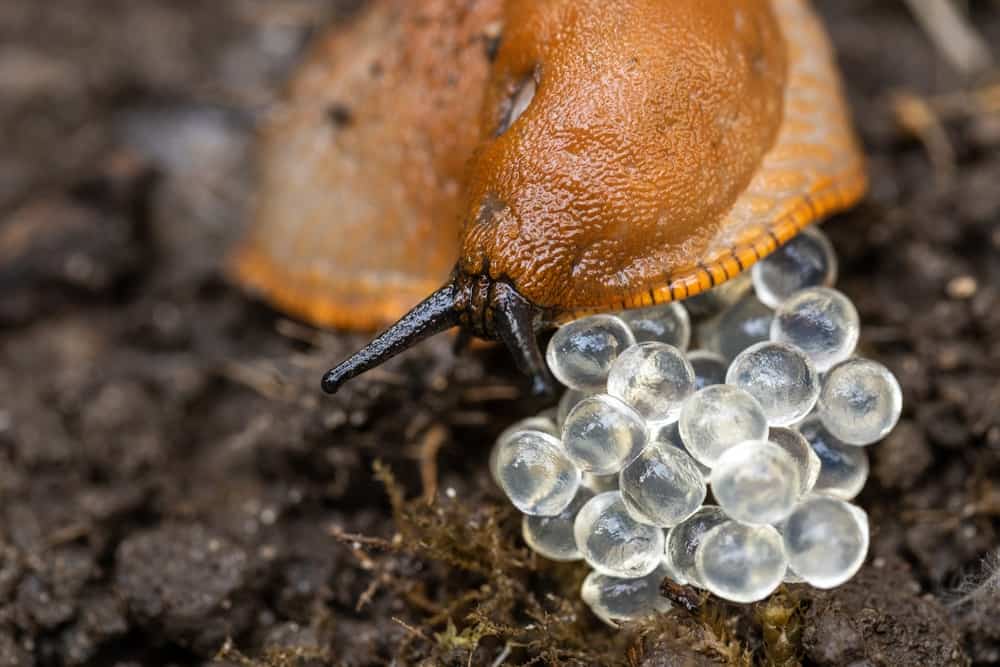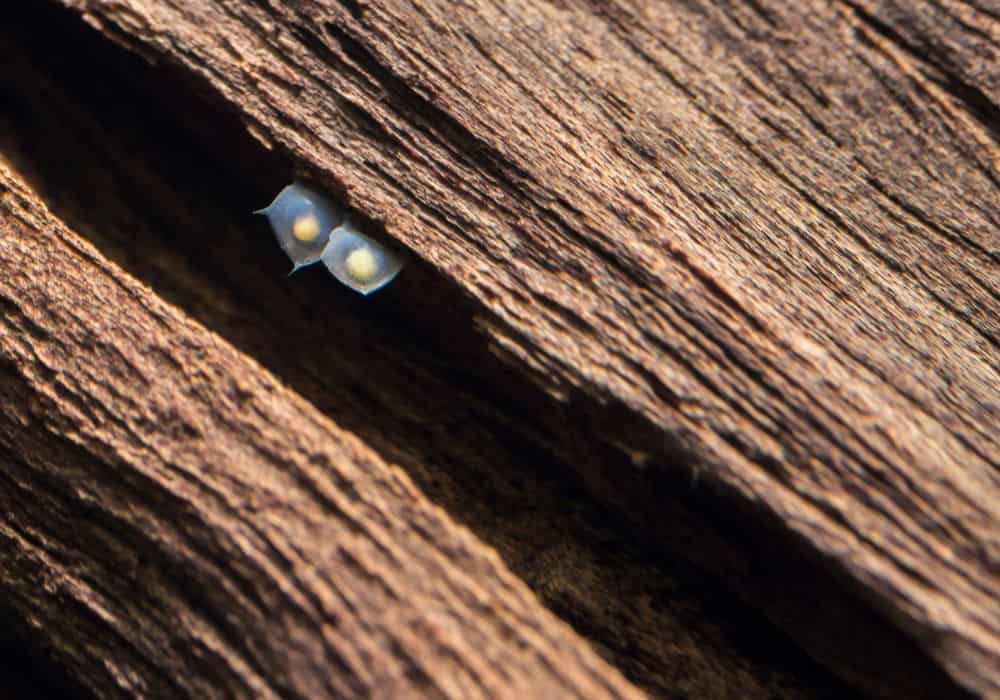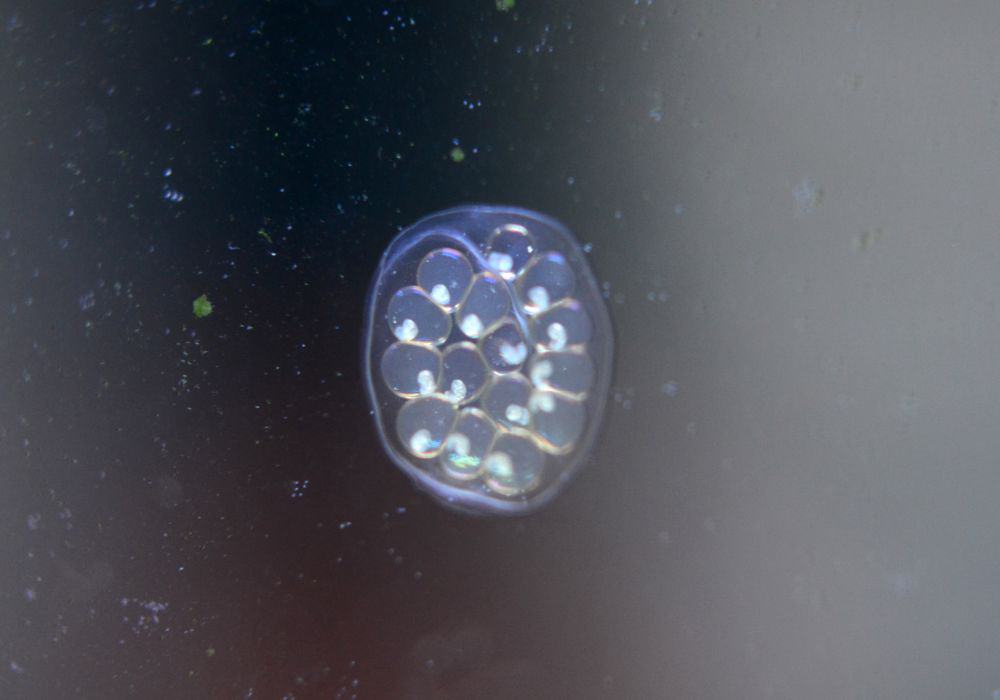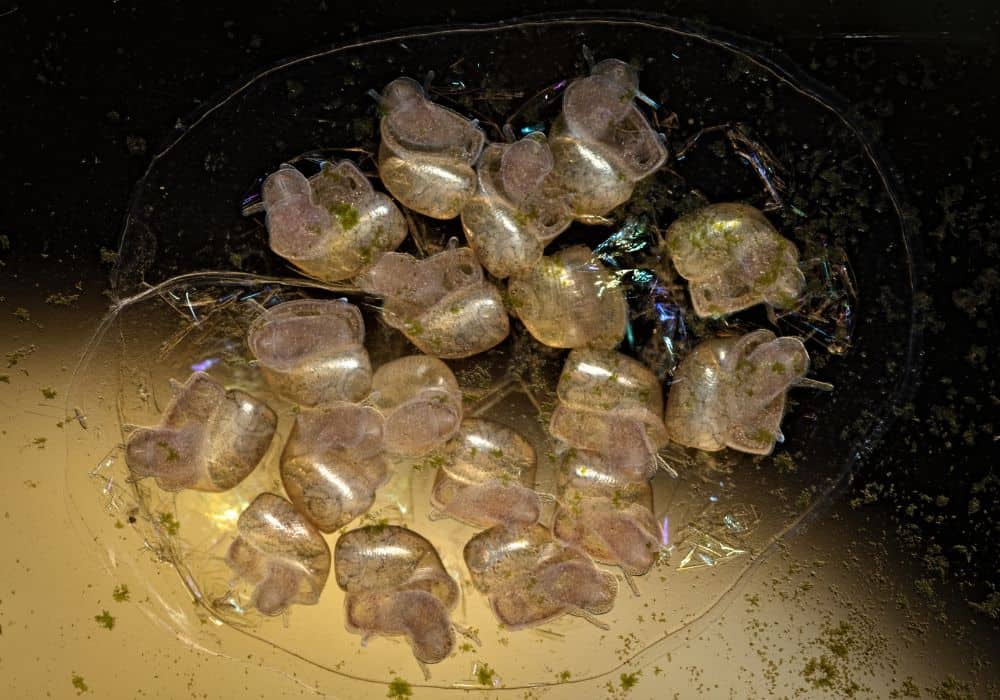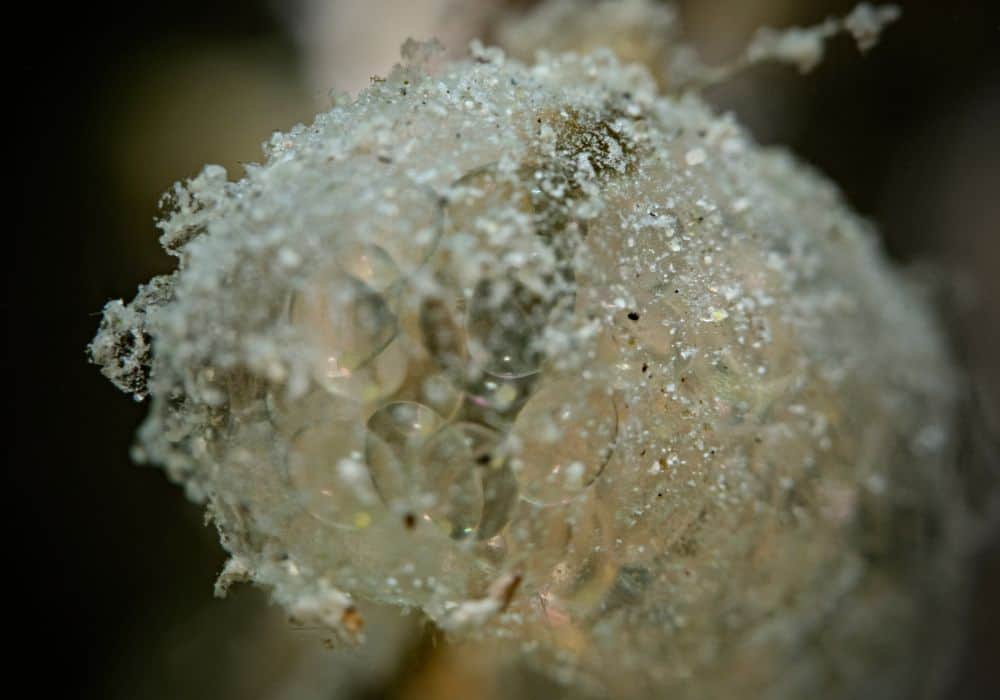Snails can be a controversial addition to any fish tank. Some people think these creatures are an immediate pest and must be removed immediately.
But for others, snails are pets in their own right, and people go above and beyond to feed, nurture and breed them.
Whether you want to keep or evict them, one of the most important things about snail management is identifying when they lay eggs. This is because their population can quickly explode, causing several adverse effects to the rest of your tank.
This article will explore some of the most common snails on the market. We’ll explain their different appearances and offer some insightful facts to help you decide whether they pose a threat or treat to your tank!
What do snail eggs look like?
Unfortunately, snails are a diverse kind of creature. And although they might all share common features like a shell, tentacles, and eating habitats, they each lay very different types and kinds of offspring.
Some species leave incredibly feint hard-to-detect eggs, while others leave unmissable clusters. A small minority of unique snails don’t even lay eggs, instead are livebearers that can surprise and overwhelm you without warning.
Below are the most common snail eggs and key ways to identify them in your tank.
1. Nerite snail eggs
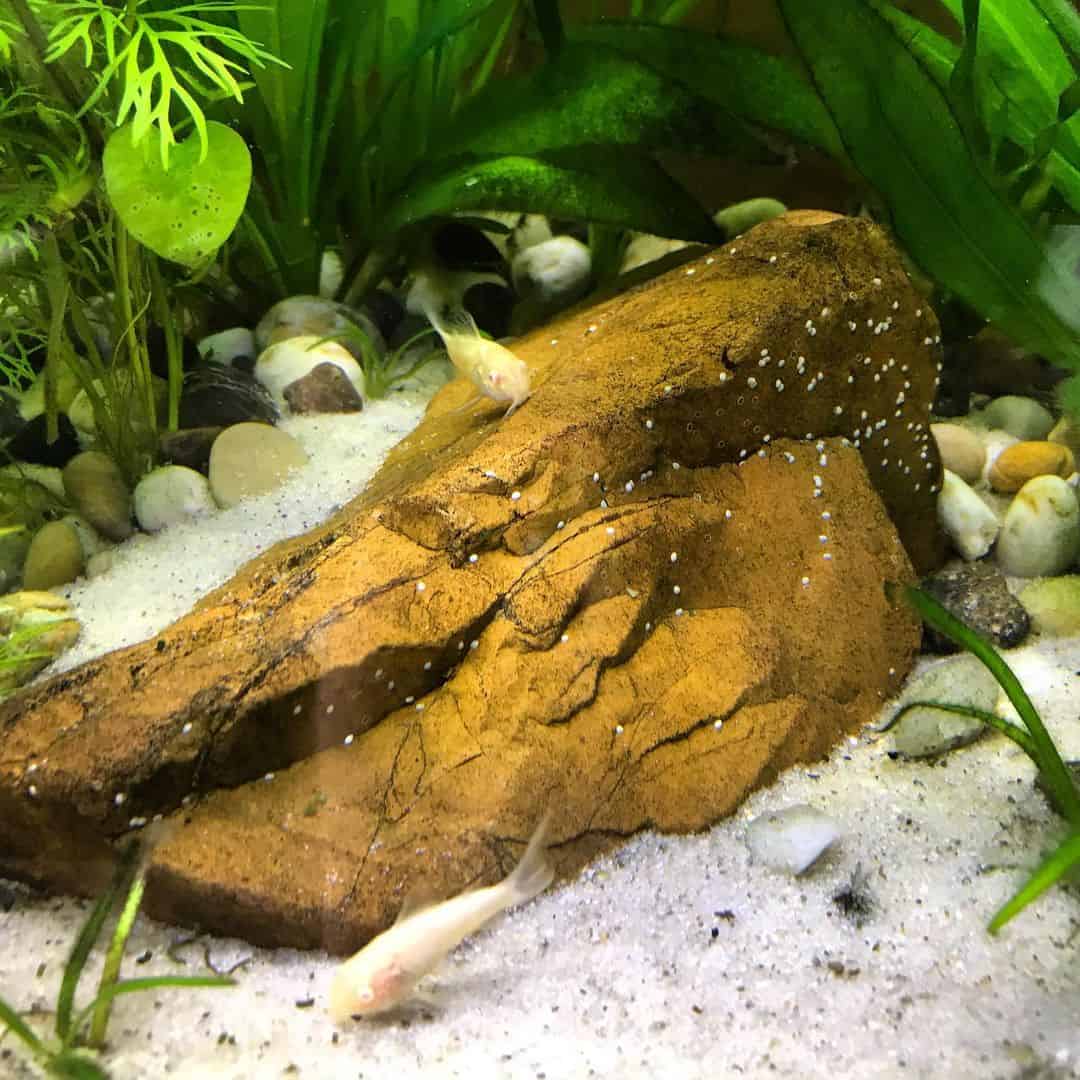
littleblueoctopus19
Nerite snails are incredibly popular and widely sold in all pet shops. They are a beneficial snail in your tank because the nerite snail is an excellent tank cleaner that can clean algae away while remaining docile and not causing friction with other pets.
Nerite snail eggs look like tiny white dots and are easy to spot against dark surfaces. The eggs are compact and rigid, requiring a scraper and some elbow grease to shift.
The good news is that the nerite snail requires saltier, brackish water to reproduce successfully. So if you own a freshwater aquarium, your tank will not quickly become swarmed.
2. Assassin Snail Eggs
With a name like that, the Assassin snail has earned an excellent reputation across the fish world for keeping the populations of other snail species at bay. As a carnivore, they will feed off different types of snails, flake food, worms, and dead fish.
These snails lay only one egg at a time, meaning keeping them on top of their numbers is easy. Eggs look yellowish and are contained in a translucent-like enclosure for protection. Like the Nerite snail, the assassin snail will lay her eggs on hard surfaces like rocks, wood, plant leaves, and aquarium glass.
Eggs usually take about two months to develop, at which point the infant snails will bury themselves into the aquarium’s substrate.
3. Ramshorn Snail Eggs
Ramshorn snails can be the bane of many tank owners because they tend to arrive in your tank attached to decorations, plants, or substrate.
The Ramshorn snail can quickly overwhelm a tank, as they reproduce incredibly fast and in high numbers per reproduction cycle. To add to the frustration, eggs start as translucent, jelly-like globs with one tiny dot marking them, making them quite challenging to spot.
After only a few days, the individual eggs hatch. Although tank owners can reduce their numbers by controlling feeding, some introduce Assassin snails to control and prey on them.
4. Mystery Snail Eggs
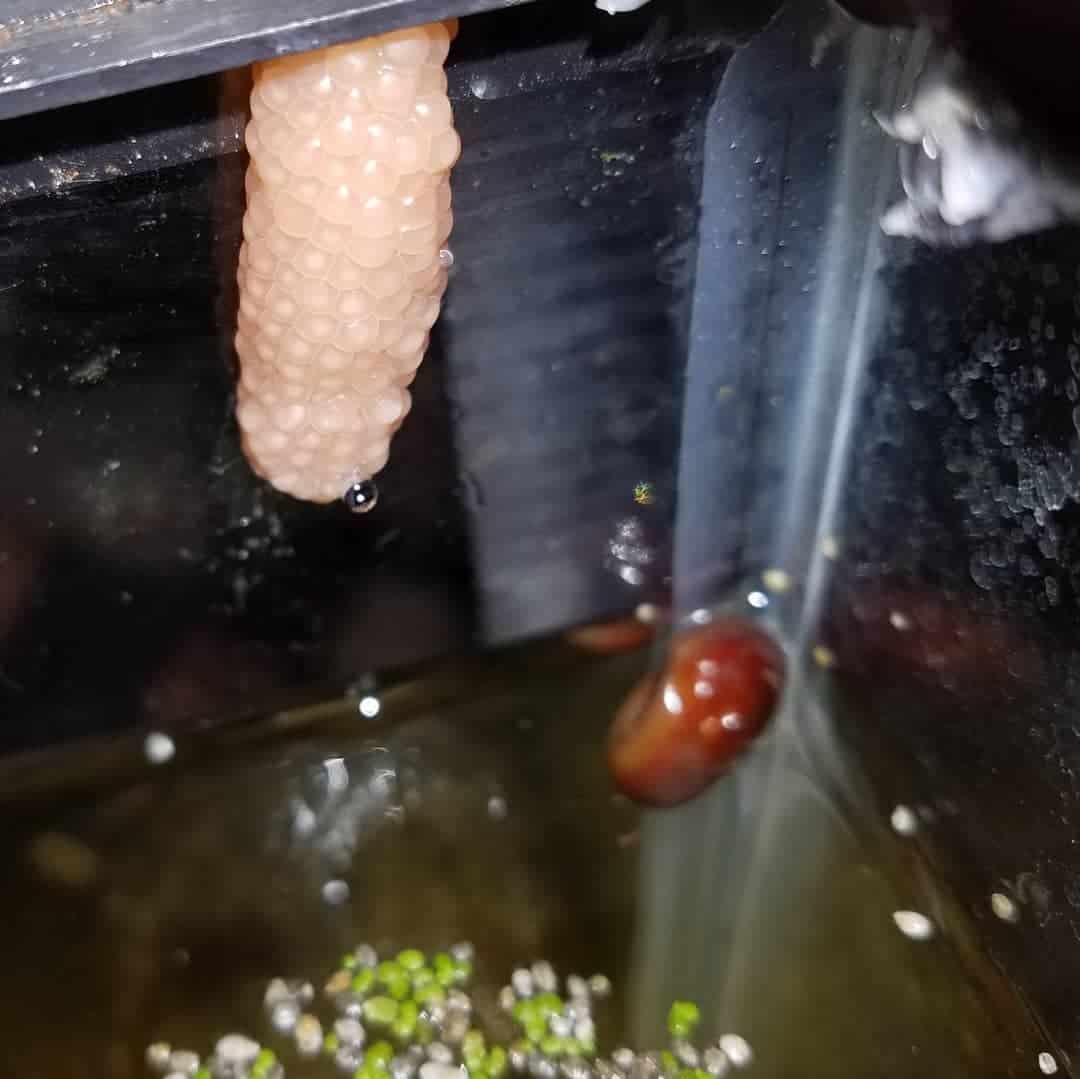
aquanewgrow
Mystery snail eggs are a type of apple snail and have perhaps one of the most straightforward eggs to identify, thanks partly to their vivid, bright pink color. Snails will lay them in sizeable clumps, ranging from fifty to over two hundred, across plants close to the waterline.
Some pet owners are surprised to find these pink egg clusters in unusual places. That’s because if she does not have sufficient space, the mystery snail can escape the tank and lay a clutch under the tank lid, outside the tank walls, and even along the electrical power cord!
Because female mystery snails can hold sperm for up to 9 months, a store-bought snail can suddenly start reproducing and catch you off-guard. She will require a new mate once she has laid the eggs, making managing populations much more manageable than other species.
5. Rabbit Snail Eggs
Though relatively rare to find and buy, Rabbit snails are beautiful, giant, and peaceful freshwater snails that lays eraser-sized gelatinous sacs that are white. Unlike other snails, Rabbit snail eggs don’t necessarily lay eggs but instead can be considered livebearers.
No embryo is inside the sack but a fully formed baby Rabbit snail. It can take only a few hours from being laid for the baby to hatch. This baby snail is known for its ferocious appetite and will quickly consume whatever vegetation is nearby.
6. Bladder snails
Often considered a pest because of how fast they can reproduce, bladder snails can quickly grow in numbers in your tank if left unchecked.
They lay ‘capsules’ containing up to 40 eggs, which only take a week or so to hatch. Young bladder snails reach sexual maturity quite quickly, adding to their reputation as an infestation snail.
On the plus, bladder snails are perfect cleaners, and if you manage to control their population, they can be a great addition to your tank.
7. Japanese trapdoor snails
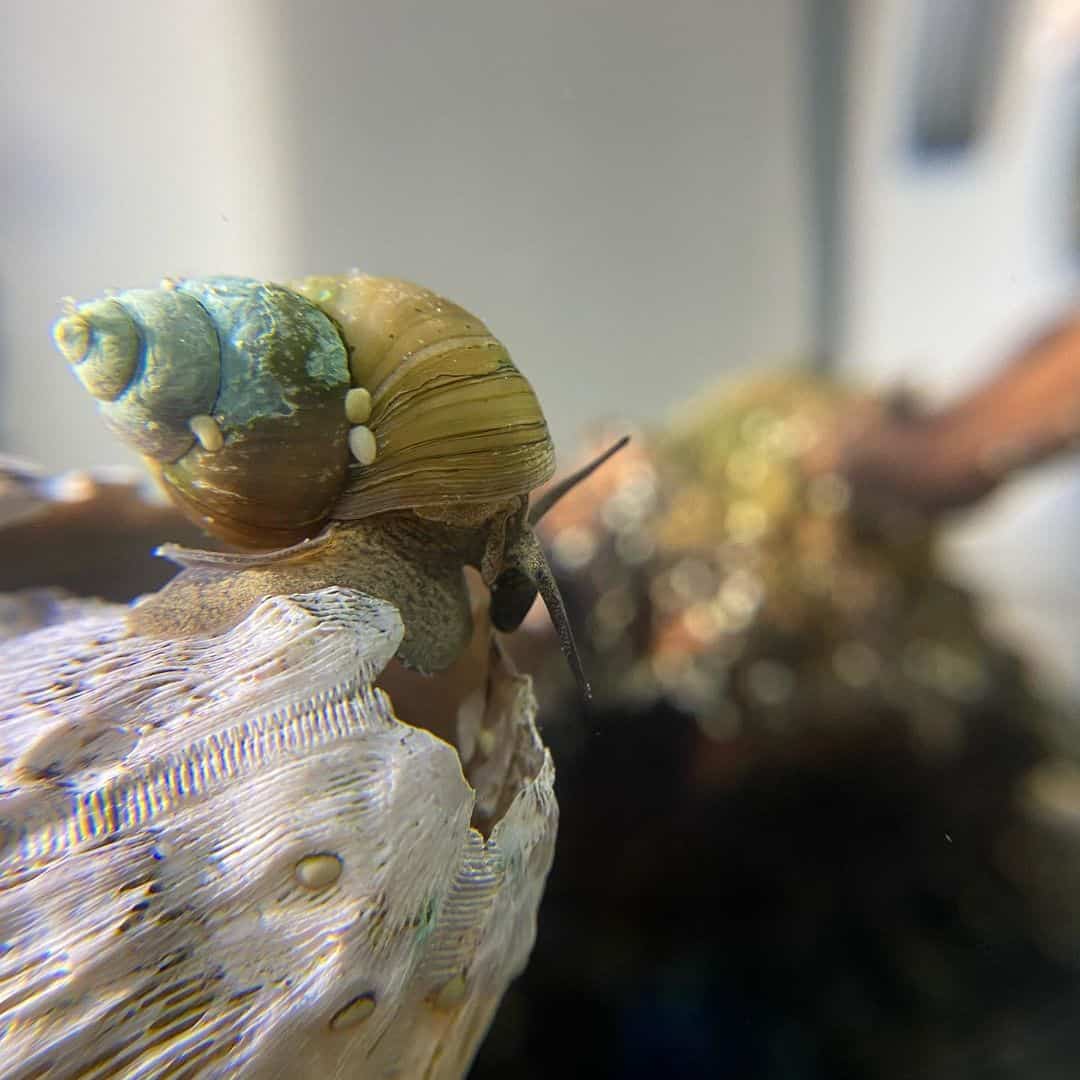
snails.have.faces
Like Rabbit snail eggs, the Japanese trapdoor snail is one of the more unique snails in that she doesn’t lay hard eggs in your tank.
Instead, she gives birth to live young. Developing embryos are kept in the mother’s ‘brood chamber,’ which gives birth every couple of weeks in captivity. They mate sexually, so you will require both a male and a female.
8. Malaysian trumpet snails
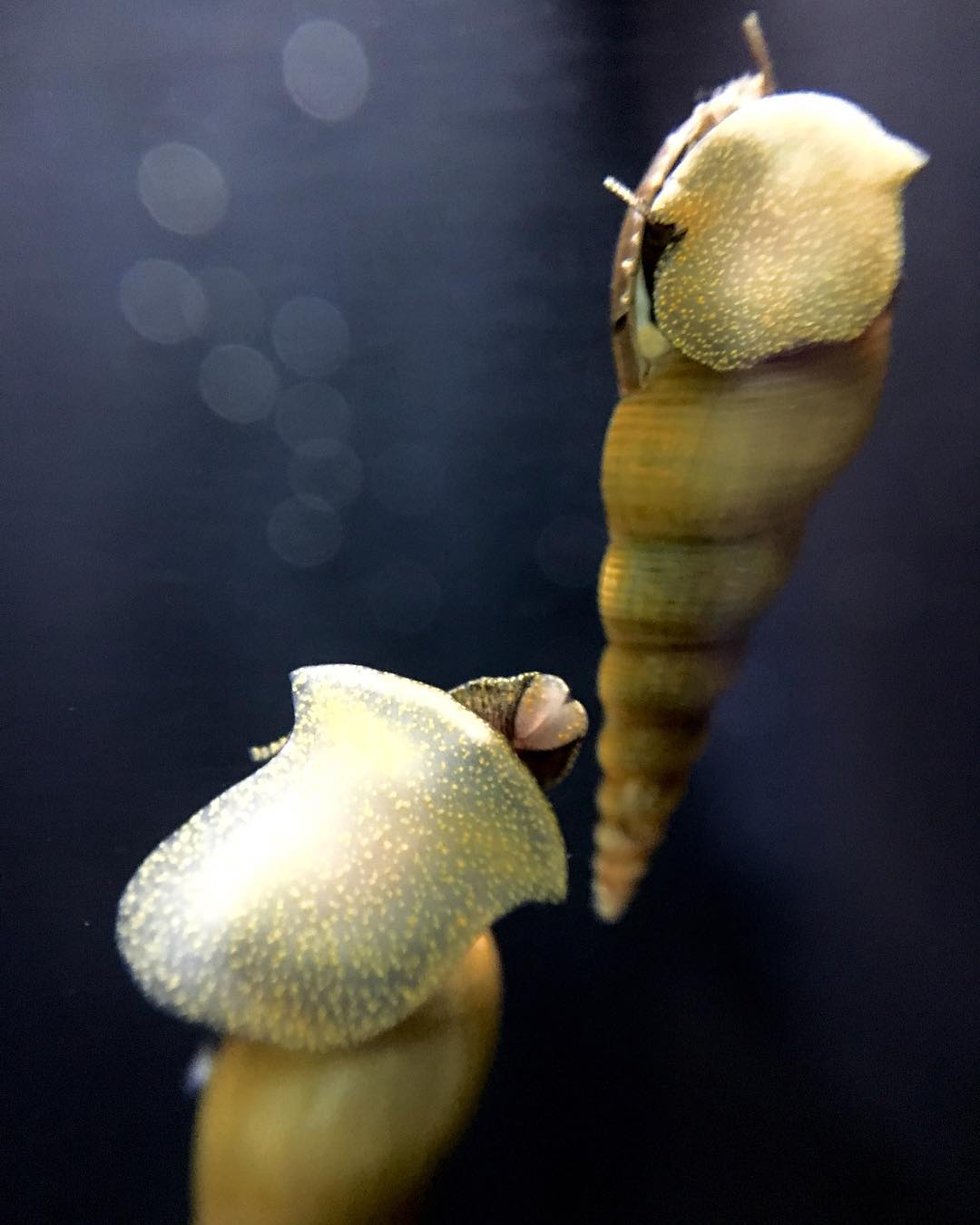
john_fegan
Also known as the red-rimmed melania, these are another species of livebearing snail that won’t leave any noticeable eggs for you to detect.
They’re often considered a pest because they can reproduce asexually, meaning their population can explode if left unchecked. Additionally, they carry several parasites that can harm other fish and even humans.
9. Pond snails
As some of the most prominent snail species, pond species are eye-catching in any aquarium. They’re also called ‘bombproof,’ as they can survive even the most taxing conditions.
But pond snails prove a problem for many pet owners because of how they reproduce. As hermaphrodite snails possess both male and female sex organs, meaning they can cross and self-fertilize. They also lay often, usually once per week. White eggs are protected inside a cocoon just underneath the water line.
Escalating pond snail populations can be very dangerous for your tank, as young snails have an incredible appetite for surrounding aquatic plants.
How do you get rid of snail eggs? And why?
- Certain fish species, like clown loaches, cory catfish, pufferfish, and gouramis, are naturally attracted to eating snail eggs and will hunt freshly laid eggs quickly.
- Snail species often lay their egg clutch on the glass or near the water line. Using something like a razor blade, credit card, or plastic scraper can be all you need to remove them.
- For species deep inside your tank, you may need to quarantine ornaments, plants, and fixtures in a harsh chemical mixture of bleach, hydrogen peroxide, water, or salt. This will kill off any snail eggs.
- As well as reducing your snail population, their eggs hurt water quality. Stale eggs can add to your tank’s nitrate and ammonia levels.
- If you want to keep these new snails, remember to adjust your feeding regime accordingly. More snails will require more food, including pellets and wafers.
Conclusion
Snails can cause conflict for many fish owners. They are so interesting, fascinating, and beautiful in their own right – but there is a lot to consider when deciding to keep them.
Snails can quickly deplete natural plants in your aquarium, overpopulate and cause rising problems with your ammonia and nitrate levels.
Whether pest or pet, the presence of snail eggs will undoubtedly make you take a closer eye on the conditions of your aquarium; some snails, like the Nerite, can be formidable cleaners and a great benefit to your tank.
Others, like the Ramshorn, can quickly spiral out of control and swarm you. Therefore, quickly identifying the snail’s respective eggs will allow you enough time to prepare a defense.
Please comment below if you still have questions about your snail’s eggs’ appearance, shape, and coloring.
But remember:
- In most cases, keeping a same-sex population of snails can help manage the number in your tank.
- Some snails, like the Ramshorn, can infiltrate your tank through plants and decorations.
- Tank inhabitants, like clown loaches, gouramis, and even assassin snails, can prey on eggs to keep populations in check.
